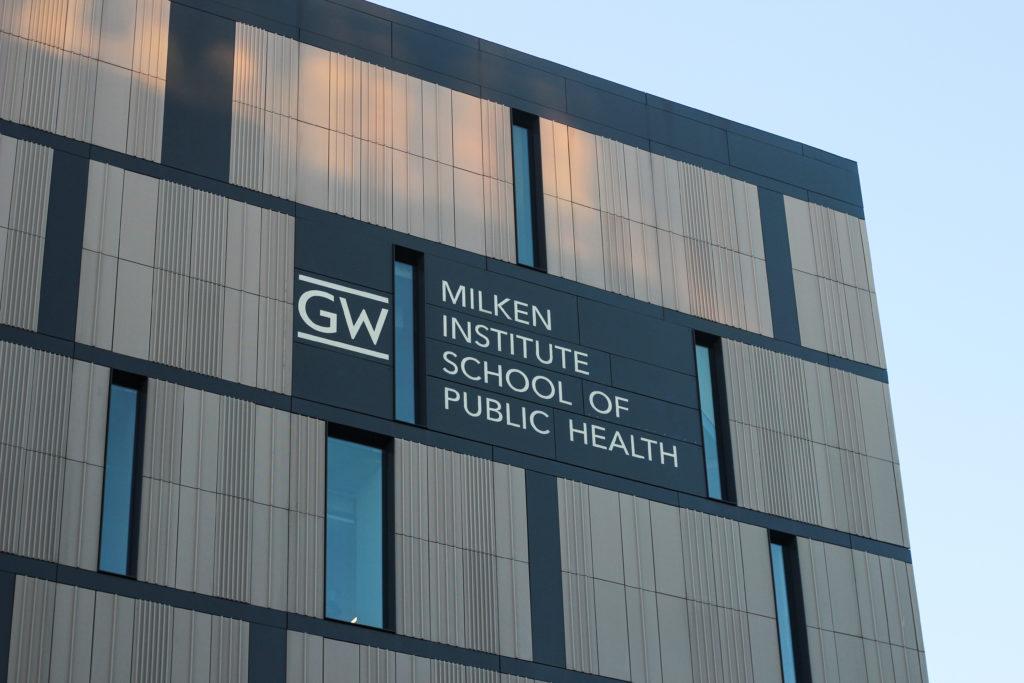Certain areas of the skin, like behind the ears and between toes, can be hotspots for unhealthy bacteria, according to a Milken Institute School of Public Health study released last month.
Marcos Pérez-Losada, the lead author of the study, and Keith Crandall, the study’s co-author, found that areas behind the ears, inside the belly button and between the toes have less microbe diversity than areas like forearms or calves. Crandall said microbe diversity across the skin microbiome can result in a healthier accumulation of microbes, reducing the risk of skin diseases like acne and eczema.
Microbes, or germs, are found everywhere in living organisms and exist in groups called microbiomes, according to the Centers for Disease Control and Prevention.
“When you have a less healthy microbiome, it is because one or two particular species have taken over everything,” said Crandall, a professor of biostatistics and bioinformatics. “When you have reduced variation, it’s indicative of a less-healthy environment.”
Crandall said when Pérez-Losada, a professor of biostatistics and bioinformatics, approached him to brainstorm topics for a semesterlong research project for his genomic students, he recommended looking into the areas of the skin his grandmother warned him to wash. Crandall said Pérez-Losada and his students proved what Crandall dubbed the “grandmother hypothesis,” which theorizes that there is microbe diversity across the skin microbiome, specifically between oily, moist and dry areas.
“Most people previously thought that the skin microbiome was just kind of homogeneous,” Crandall said. “Once you swab skin anywhere, you’ve got the skin microbiome, and it turns out that, like most of these microbiome studies, if you look a little closer, you’ll find some more variation partitioned in ways we haven’t thought about.”
An unhealthy microbiome usually has one or two bacteria that dominate the biome, Crandall said. He said by contrast, a healthy microbiome consists of more than 1,000 diverse microbes which people can achieve if they wash skin hotspots to kill overpowering bacteria.
“Grandma was right,” Crandall said. “Follow her advice and make sure you wash behind your ears, in between your toes and in your belly button.”
He said students studying genomics swabbed different areas of their body to collect the data for the study, using their forearms and the calves as a control. They tested 579 samples from 129 “healthy” adults, according to the study. The students conducted PCR tests of DNA extracts before sending them to Milken’s sequencing lab in the GW Genomics Core, Crandall said.
“They learn about PCR, they learn about DNA sequencing and along the way, they are learning about all of these concepts as they apply them,” Crandall said. “They get sequence data back and then they start doing the analyses and learning the analyses, and they go on statistical hypothesis testing and test the grandma hypothesis.”
Pérez-Losada and Crandall described the educational experiment in a study published in 2020. Pérez-Losada has repeated this education experiment for four years, publishing the cumulative data into his newest study to prove skin microbiome diversity.
“Like all good research, we publish it and put it out there for other researchers to build on if they’re particularly focused on skin,” Crandall said.
Pérez-Losada and Crandall intend to continue working with their Milken colleagues to study other aspects of microbiomes, like the impact of cystic fibrosis on the microbiome through a collaboration with Children’s National Hospital and artificial sweeteners’ effects on the gut microbiome. Crandall said he hopes the study will contribute to more niche research into the microbiome.
“It obviously has implications for dermatology and skin health, perhaps for risk of severe acne,” said Crandall. “There’s a lot of work in the military with microbiome around wounds, wound healing and infections. A lot of that has to do with skin microbiome and different regions of the skin having different diversity levels and different components of the microbiome might be helpful in providing insights.”
Experts in skin microbiome research said people often believe the misconception that bacteria on the skin signifies uncleanliness despite the health benefits that the presence of diverse bacteria provides.
Ellie Acosta, a postdoctoral associate at Yale University studying the skin microbiome, said the study’s data regarding the lack of diversity of bacteria between humans on the skin was interesting when compared to the variation of bacteria between humans in the gut microbiome, which is much more diverse.
“There are a lot of differences [in the gut microbiome] between people living in different geographical areas and people with different lived experiences, but the skin microbiome seems to be pretty similar and homogenous between different people,” Acosta said.
Acosta said the next steps in skin microbiome research might determine why different skin sites harbor varied abundances of bacteria. She said the research can help identify bacteria that cause skin conditions, like acne and eczema, and design therapeutics to target these conditions.
Acosta added that despite the common belief that bacteria on the skin is harmful, most bacteria are beneficial and crucial in immune response development. She said the overgrowth of certain bacteria can cause skin conditions like dermatitis.
“There’s sort of this misconception that the skin microbiome is like that we’re all covered in bacteria all the time, and it’s gross and we should try to get them off of ourselves because that’s not the case,” Acosta said.
Travis Blalock, an associate professor of dermatology at Emory University, said society generally oversimplifies skin cleanliness, assuming uncleanliness equates to excess bacteria on the skin. He said these perspectives convey distorted messages that prompt people to try to scrub away bacteria on their skin to be clean and healthy.
Blalock said the grandmother hypothesis adds sentimental value to the study but oversimplifies the intricacies of the skin microbiome by emphasizing keeping the skin clean versus maintaining a healthy skin microbiome. He said the study may help guide dermatologists in educating their patients and tailoring skincare products to specific sites on the skin.
“[The study] prompts a shift away from the dogma that associates ‘no bacteria’ with cleanliness and health, moving towards the understanding that a well-balanced bacterial skin microbiome, in all areas where there is skin, contributes to overall health,” Blalock said in an email.





